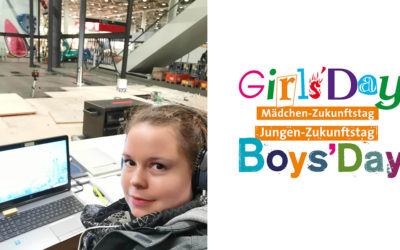R.I.F.E.L. (Research Institute for Exhibition and Live-Communication) has conducted a study on the cost development in the event and trade fair industry. They did so on behalf of fwd: Bundesvereinigung Veranstaltungswirtschaft e.V. (German federal association of the event industry).
R.I.F.E.L. calculated comparable live formats from 2019 and 2022 and averaged the results to obtain average values.
Event industry heavily impacted by cost increases
The study comes to the conclusion that the event industry is disproportionately affected by the rising costs currently felt everywhere. The cost increase for an event is on average 45 %, in some cases up to 58 % compared to 2019.
Cost increase for trade show stands
For example, the following price increases apply to trade show booths:
Exhibitors will have to pay an average of 34 % more for a system-based trade show booth this year. Personnel costs will increase by around 50 %. The cost of procuring materials will rise by around 20 % and transport went up by around 25 %.
For an individually planned stand, there are price increases of 35 % for personnel, 35 % for materials and 30 % for transport.
Reasons for the cost development in trade fair construction
Not only did the prices rise for raw materials. Other factors are responsible for the large cost jumps in the event industry and here in particular in the trade show industry:
Increased demand
After hardly any events were able to take place in the last two years due to the pandemic, the need for live events is greater than ever. The switch to digital formats in corona times helped to maintain existing relationships. Now new contacts are to be made again in “real” life.
In the summer of 2022 alone, there will be twice as many trade shows held in Germany as in the comparable period in 2019.
On one hand, the high demand is good news for the companies in the event industry. The order books are finally well filled again. However, the implementation of the many projects is made more difficult by the following problems.
Shortened event year
Due to the ongoing corona pandemic and the possible restrictions that go hand in hand with it, organizers are currently planning their dates mainly from April to October. This effectively shortens the event year from 12 to 8 months.
With the number of events remaining the same or even increasing, this leads to many trade fairs running in parallel. This means enormous scheduling pressure for exhibitors, attendees and executing service providers alike. Moreover, this leads to rising costs, particularly due to increased personnel and transport requirements.
Decreased number of companies in the event industry
The ban on events, which has been in place for the better part of the last two years, has led to a drop in sales of almost 70 % for companies in the event industry. Coupled with the exodus of personnel to other sectors of the economy, this loss has led to many companies going out of business.
The thinned-out corporate landscape results in the pressure for the remaining companies to meet the demand by themselves. This leads to additional demand for these suppliers in the areas of personnel, materials and logistics.
Staff exodus in the event industry
The uncertain economic outlook caused by the pandemic has prompted many employees to change careers. It is assumed that 54.5 % of the personnel in the event industry were lost.
This staff is now missing in the companies when it comes to implementing projects. Many providers can hardly cope with the usual workload with their own staff. The increased demand discussed above means that companies have to rely even more heavily on partners and external staff. Here, however, capacities are naturally far too low for the existing demand as well. For example, currently the advance planning period for assembly personnel for trade show booths is over 60 days.
In case companies do find suitable support, they have to pay much higher prices than before the pandemic. Occasionally, there is a real price war for the remaining workers.
Supply shortages
Material prices are not only driven up by rising raw material costs. Equally important are the prevailing supply chain disruptions.
Companies have to plan with significantly longer delivery times for construction materials, technology and furniture than they did in 2019. At the same time, since customers are currently often placing orders at very short notice. In some cases the service providers have to find more cost-intensive solutions in order to be able to implement projects.
New hygiene requirements
The hygiene regulations introduced to combat the pandemic add to the costs of events. The creation of hygiene concepts is just as necessary as measures to maintain minimum distances. There are material and personnel costs for cleaning and desinfection of surfaces and hands. In addition, exhibitors have to be provided with suitable procedures for data collection, admission controls, etc.
New requirements for agencies and booth builders
Digitization and sustainability are probably the most pressing issues of our time. Sustainability in particular is increasingly becoming an integral part of an event concept.
To meet customer demands, many agencies and booth builders get certified in terms of sustainability, safety and quality. In addition, they train their employees with regard to the new requirements and invest in new technologies.
In order to recoup these investments, providers must include these costs in their billing rates.
Consequences of the price increases
Direct awarding of contracts
When selecting their service providers in the event and trade show sector, many companies are currently moving away from the pitches that are otherwise often the norm. Instead, they are awarding their contracts directly to the provider they trust.
In order to secure the best possible conditions, many customers are currently concluding longer-term framework agreements for five years, for example. These offer planning security for both parties. On the service provider side, problems such as a lack of personnel or materials can be avoided with this measure.
More sustainable trade fair presence
In addition to the economical benefits, exhibitors should also focus on sustainable trade show appearances with reusable stand elements and materials from an ecologic perspective. Through the multiple use of resources and the resulting independence from possible further price increases, they achieve cost savings for future events.
Scheduling longer planning periods
Given that currently many exhibitors order their trade show booths at very short notice, service providers have to find quick solutions to bottlenecks in materials and personnel. This leads to enormous cost increases. In contrast, longer-term planning or early order placement on the part of exhibitors provides the stand builder with sufficient lead time to procure all resources on time and as cheaply as possible.
Impact of rising costs on WUM Brand Spaces
We at WUM Brand Spaces are also currently confronted with tight availabilities and high material, transport and personnel costs. Unfortunately, we can no longer compensate those by savings and internal optimizations. Therefore, we have to incorporate the additional costs into our offers accordingly.
The aim here is to continue to be a strong partner for our customers, to offer the usual high quality standards and to maintain a stable working environment for our employees.
Consequently, after many years of price stability, we are thus forced to increase our hourly rates in the service area. However, this increase represents only a small percentage in the total amount of market-driven price increases.
We hope that the cost development will stabilize soon and thank our customers for their understanding until then!
For more detailed information about our services and prices, please contact our Key Account and New Business managers.
You can read all the results of the R.I.F.E.L. study here. (unfortunately only available in German right now)
In short, here is a brief summary and facts:
What are the key findings on price development from 2019 to 2022?
- The industry is looking at a 68.4 % decline in sales in 2022.
- There are significantly fewer professionals than in 2019, the decrease in staff amounts to 54.5 %.
- We are looking at a 58 % price increase for events with up to 250 people.
- For events with up to 600 people, there is a 55 % price increase compared to 2019.
- Events with 1,500 people are 46 % more expensive.
The reasons for cost increases are multidimensional
- Demand for live trade shows and events is currently rising sharply. Especially to build new customer relationships after the pandemic standstill. This is also shown by the R.I.F.E.L. utilization index.
- The live event year is reduced from 12 to 6-9 months. This is because event restrictions for the coming winter are expected again.
- Increased demand meets fewer suppliers and lower market capacity.
- Massive cost increases from raw materials to transportation costs.
- Staffing costs have increased immensely as the shortage of skilled labor has created an extreme bottleneck.
- Hygiene requirements continue to lead to higher costs.
What are the consequences of the cost increases?
- Contracting companies must assume that costs will continue to rise in the future.
- Live events will be more specified. This is because companies have to allocate more generous budgets for them.
- Sustainability and hygiene will become an integral part of all trade show and event concepts.
- Supplier utilization will increase lead times and order deadlines.
- Construction materials, AV technology and rental furniture also have significantly longer delivery times than in 2019.
Copyright Image: wutzkohphoto/Shutterstock


